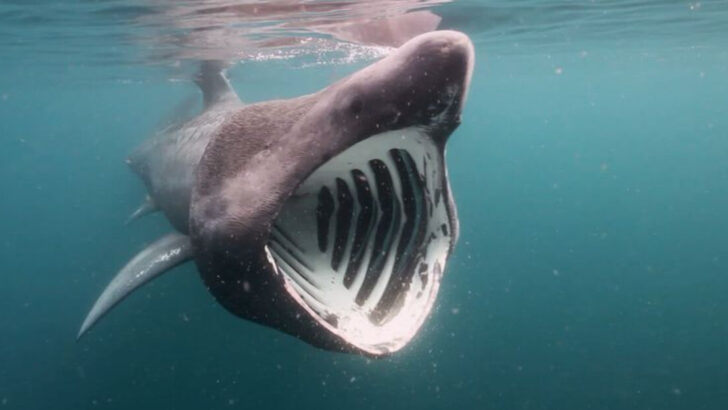Not all sharks are bloodthirsty monsters. In fact, most want nothing to do with you.
Thanks to Hollywood, sharks have been typecast as oceanic villains — jaws wide, eyes cold, always circling. But the reality? The vast majority are peaceful, shy, and honestly just trying to mind their fishy business.
U.S. waters are home to dozens of shark species, and many are more likely to flee than fight. Some glide through coral reefs like ghosts. Others patrol the deep like silent guardians, playing crucial roles in keeping marine life balanced and thriving.
These 13 sharks aren’t headline hunters — they’re misunderstood marvels. So let’s trade the fear for fascination and meet the gentle fins among us.
Whale Shark

The whale shark, often referred to as the ocean’s gentle giant, is the largest fish in the sea. Despite its size, this filter feeder poses no threat to humans, subsisting primarily on plankton. Oftentimes, divers and snorkelers seek the opportunity to swim alongside these magnificent creatures.
Their unique spotted patterns make them easily recognizable. Whale sharks are typically found in warm coastal regions and are a favorite among marine photographers for their serene demeanor.
Did you know? The largest recorded whale shark measured an astonishing 61.7 feet! This species embodies the wonders of the ocean.
Basking Shark
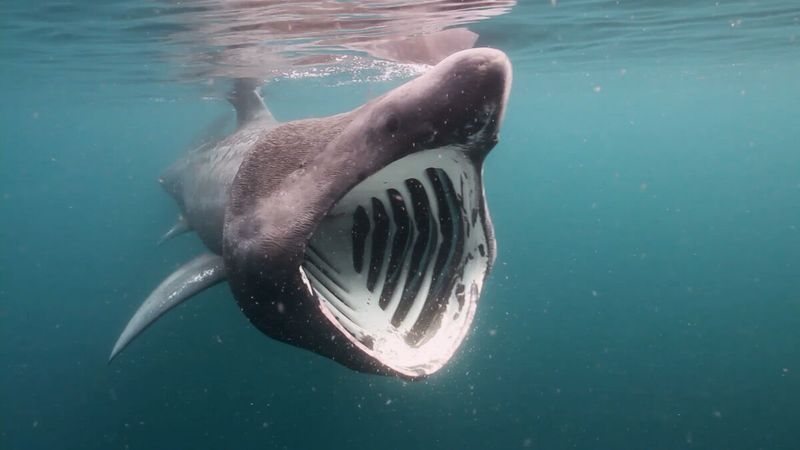
Renowned for its colossal size and gaping mouth, the basking shark is a docile plankton eater. Its name originates from its tendency to swim slowly near the surface, appearing to bask in the sun.
Despite its intimidating appearance, it lacks the aggressive tendencies of its infamous relatives. This species can be seen in temperate waters, making it a common sight along coastlines.
One can often spot its dorsal fin slicing through the water, a sight that is more awe-inspiring than threatening. Basking sharks are a testament to the diversity of marine life.
Nurse Shark

Nurse sharks are nocturnal predators, often found resting during the day under ledges or in crevices. Their sluggish nature and preference for bottom-dwelling make them approachable for divers.
These sharks possess strong jaws filled with thousands of tiny, serrated teeth. However, attacks on humans are rare, generally occurring only when provoked.
Their habitat includes warm shallow waters, typically around coral reefs. With a reputation for being one of the more sedentary shark species, nurse sharks are a popular subject for underwater photographers.
Leopard Shark
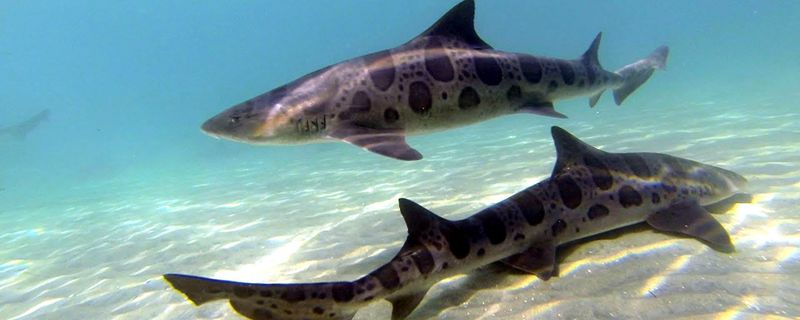
The leopard shark, named for its distinctive spotted pattern, is commonly found in the rocky reefs and sandy bays along the Pacific coast. It is a small, slender species that feeds on a diet of crabs, fish, and shrimp.
Leopard sharks are often seen in large schools, particularly during the breeding season. Their timid nature makes them more likely to flee than confront a diver.
These sharks play an important role in maintaining the balance of the marine ecosystem, controlling the population of their prey species. They’re truly a marvel to observe.
Sand Tiger Shark
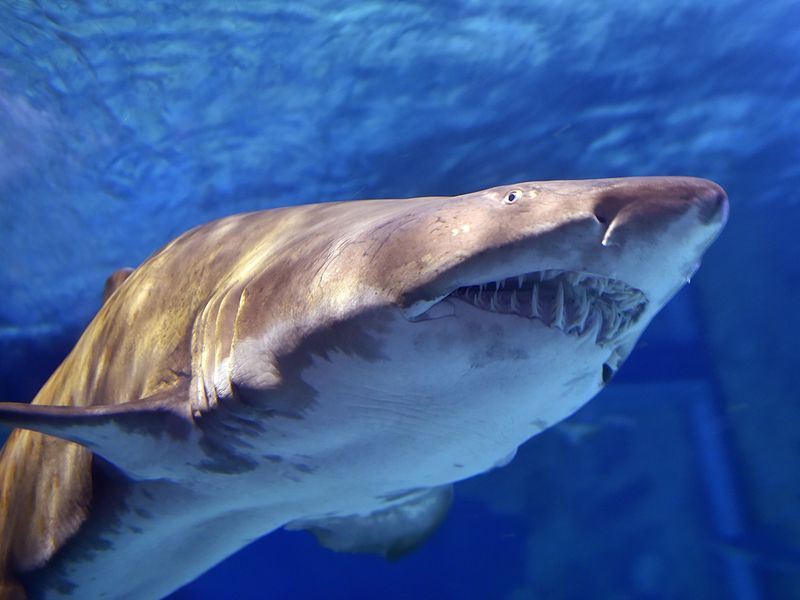
Despite their fearsome appearance due to protruding teeth, sand tiger sharks are relatively docile and have a calm temperament. They often swim slowly near the bottom of the ocean, making them popular in aquariums.
These sharks hunt small fish and crustaceans and are known to gulp air at the surface, aiding buoyancy. They prefer sandy coastal waters and are regularly seen around shipwrecks.
Sand tiger sharks are fascinating creatures, often misunderstood because of their looks. They are essential for marine biodiversity, maintaining healthy fish populations.
Angel Shark

The angel shark is a master of disguise, with a body adapted for life on the seafloor. Its flattened shape allows it to blend seamlessly into sandy or muddy bottoms.
These ambush predators feed primarily on fish and invertebrates. While they may look intimidating, they pose little threat to humans unless provoked.
Angel sharks are fascinating for their unique hunting strategy, lying in wait for unsuspecting prey. Their presence is crucial for the ecosystem, controlling populations of small fish and maintaining ecological balance.
Horn Shark
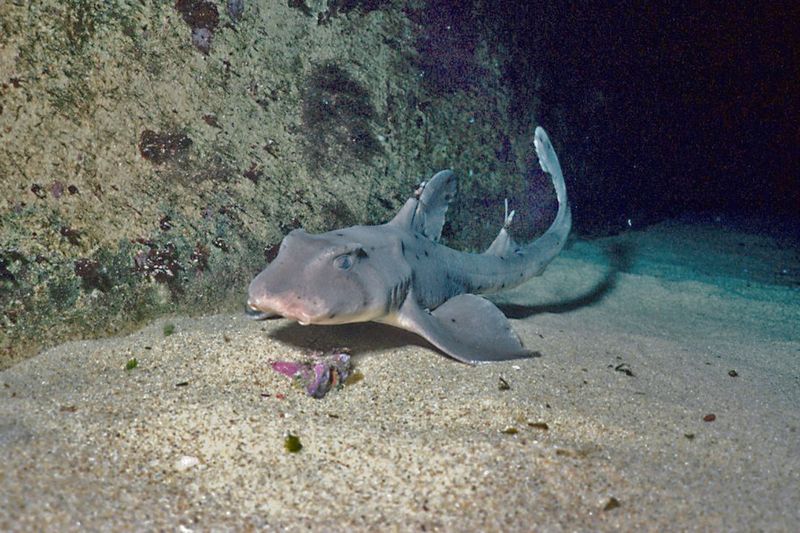
Horn sharks are small, bottom-dwelling creatures known for their distinctive horn-like ridges above the eyes. These slow swimmers are often found in rocky areas and kelp beds.
They feed on hard-shelled mollusks and crustaceans, using their strong jaws to crush shells. Horn sharks are nocturnal and tend to hide in crevices during the day.
Their docile nature makes them an intriguing subject for divers. This species is a perfect example of the diverse adaptations sharks have developed to thrive in various marine environments.
Thresher Shark
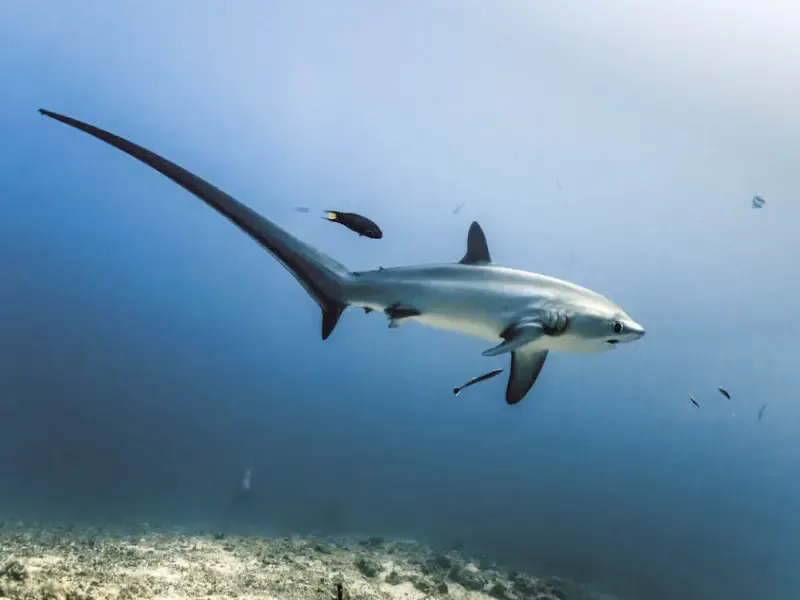
The thresher shark is easily recognized by its extraordinarily long tail, which it uses to stun prey. Known for dramatic breaches, this species is a spectacle to observe.
Thresher sharks are solitary and prefer open ocean environments, often hunting schools of fish. Despite their dynamic hunting techniques, they are not a threat to humans.
Their unique tail and hunting strategy highlight the evolutionary ingenuity of marine life. Thresher sharks are a reminder of the ocean’s untamed beauty and complexity.
Blacktip Reef Shark
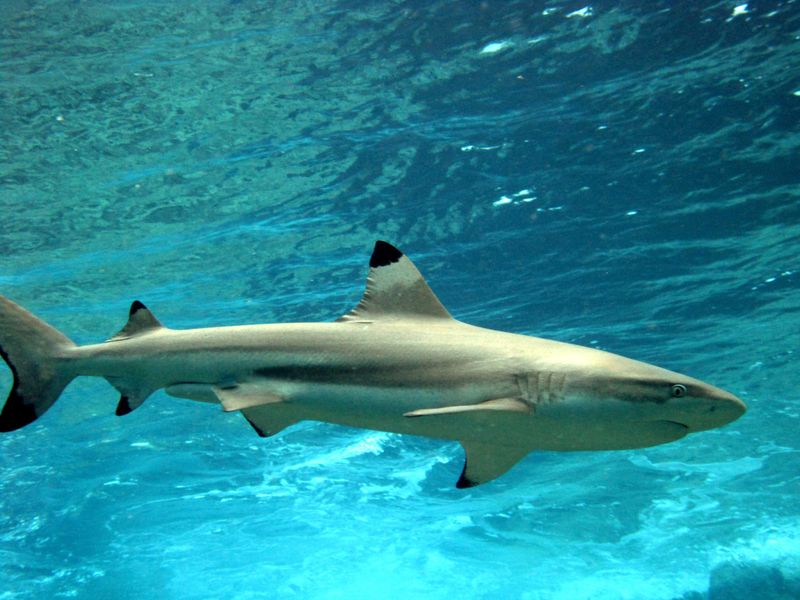
Blacktip reef sharks are sleek, agile predators often seen around coral reefs. Their distinctive black-tipped fins make them a striking sight in the clear waters.
These sharks feed on small fish and cephalopods, rarely interacting with humans unless provoked. They are known for their fast, erratic swimming patterns.
Blacktip reef sharks play a critical role in the reef ecosystem by controlling fish populations. Their presence is a good indicator of a healthy reef environment, making them a valuable species for marine biodiversity.
Bonnethead Shark

The bonnethead shark, a smaller relative of the hammerhead, is noted for its unique, shovel-shaped head. This species is often found in shallow bays and estuaries.
Bonnetheads are omnivorous, with diet consisting of crustaceans, mollusks, and seagrass. Their small size and gentle nature make them less of a threat to humans.
These sharks are fascinating for their adaptable diet and unique head shape, which aid in navigation and prey detection. Bonnetheads contribute to the health of coastal ecosystems, balancing predator-prey dynamics.
Smooth Dogfish
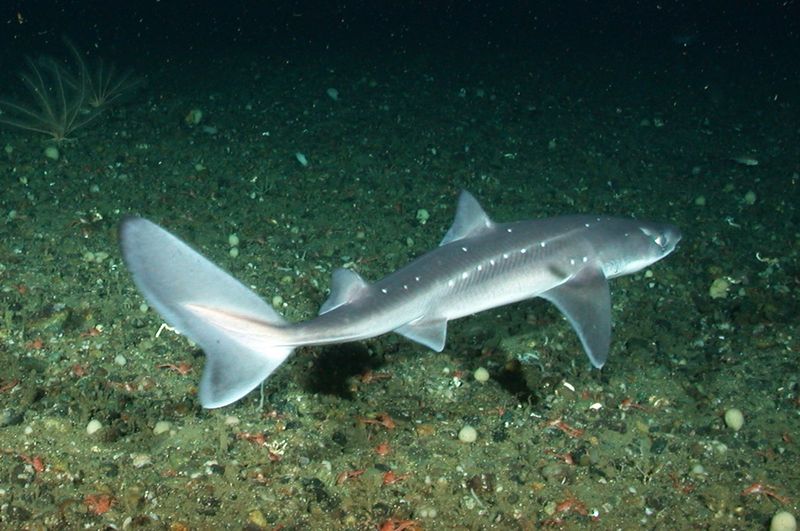
Smooth dogfish sharks, also known as dusky smooth-hounds, are small, slender sharks commonly found in temperate waters. Their smooth skin and streamlined bodies make them efficient hunters of crustaceans and small fish.
These sharks are social, often seen in schools, and are harmless to humans. Their non-aggressive nature makes them an interesting study for marine biologists.
Smooth dogfish contribute to marine ecosystems by controlling prey populations, showcasing the interdependent relationships within oceanic food webs.
Spiny Dogfish
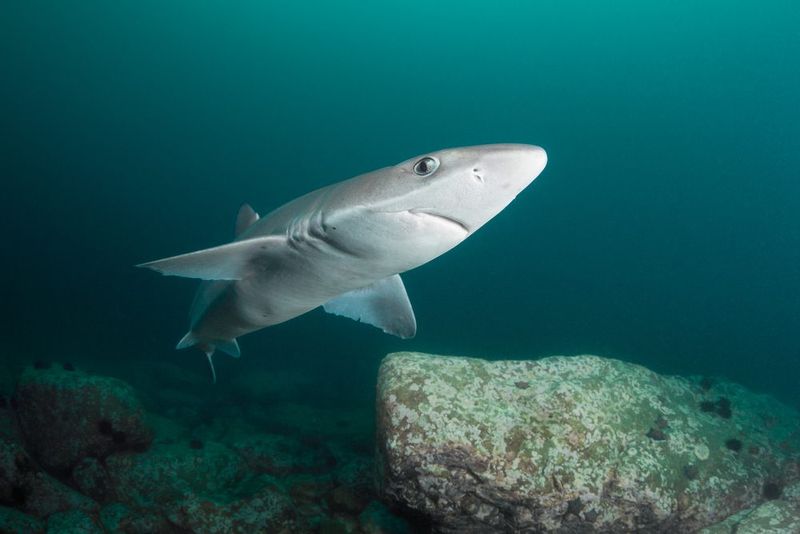
Spiny dogfish are small sharks known for their sharp, venomous spines located in front of each dorsal fin. Despite these defenses, they pose little threat to humans.
These sharks are found in cold, deep waters and are known for their long migrations. They feed on small fish and invertebrates, playing a crucial role in the oceanic food chain.
Spiny dogfish are remarkable for their resilience and adaptability, often enduring harsh environmental conditions. Their presence is vital for maintaining the balance in marine ecosystems.
Porbeagle Shark

The porbeagle shark, with its stout body and pointed snout, is often mistaken for its larger cousins, the great whites. However, porbeagles are much smaller and less aggressive.
These sharks inhabit cold, temperate waters and are known for their energetic hunting style. They primarily feed on fish and squid, contributing significantly to marine biodiversity.
Porbeagles are intriguing for their social behavior, often seen in small groups. Their streamlined form and agile movements make them efficient predators, vital for the health of ocean ecosystems.

